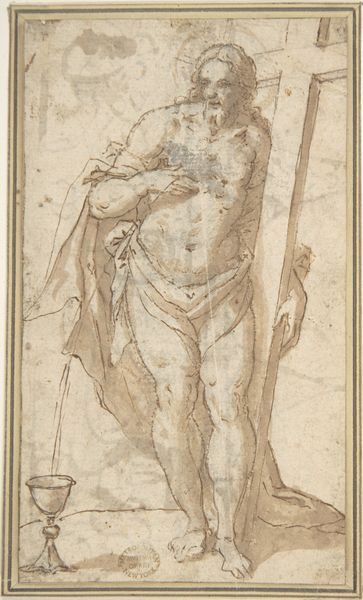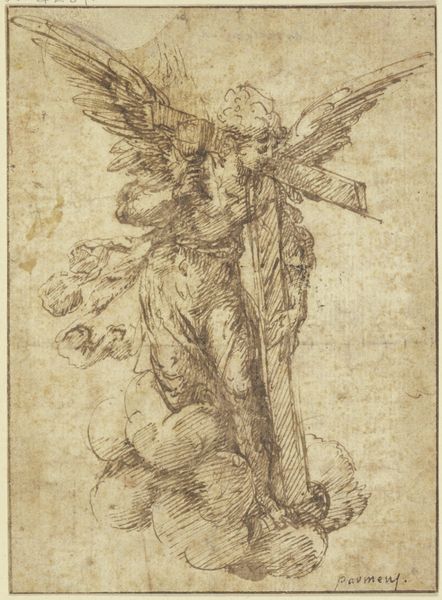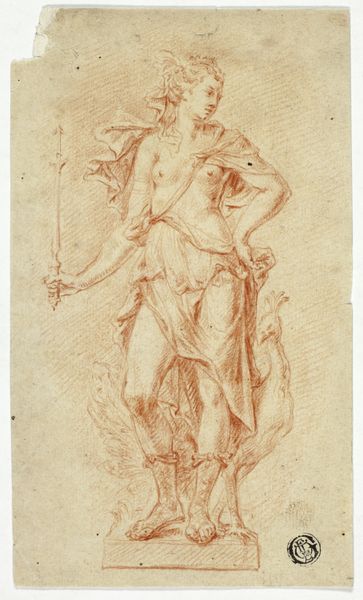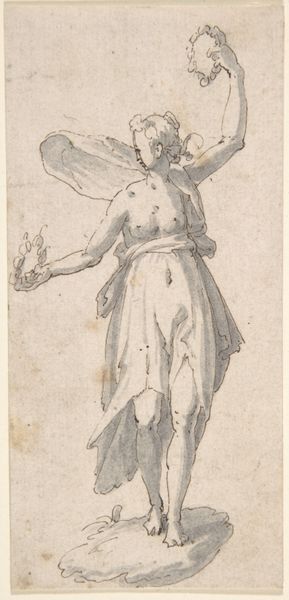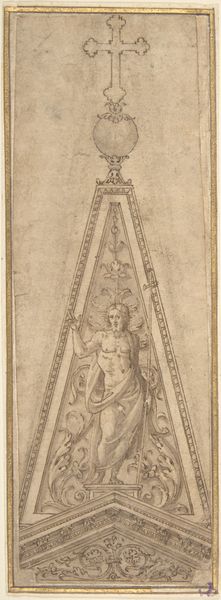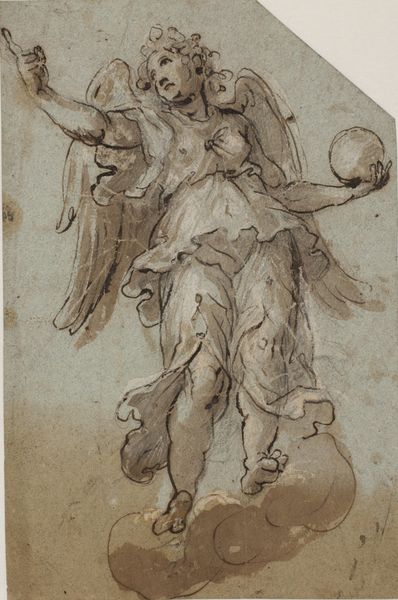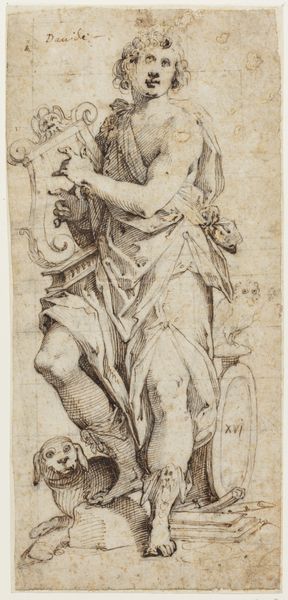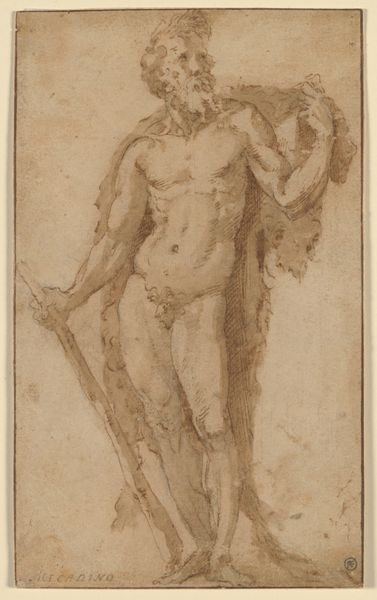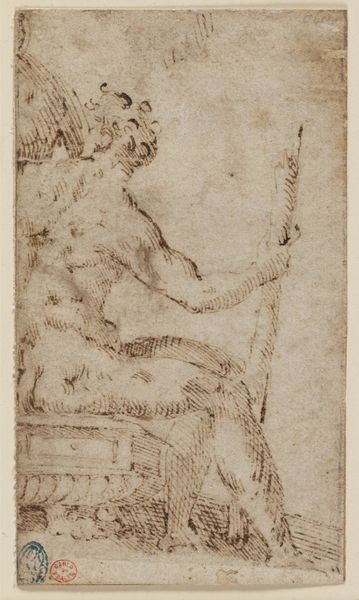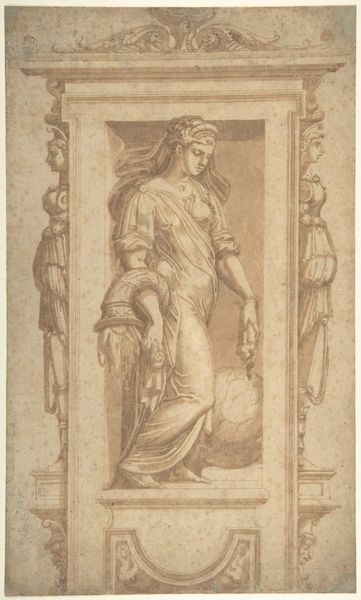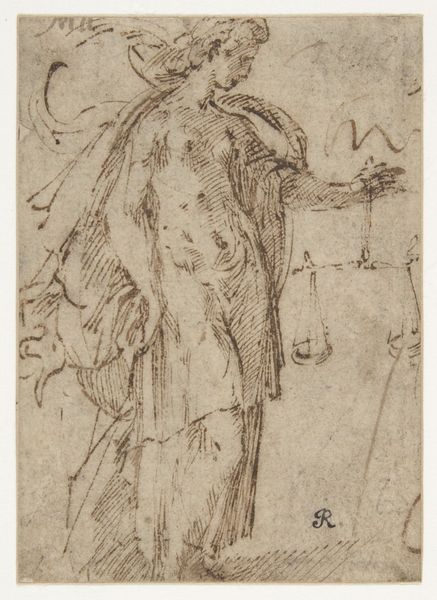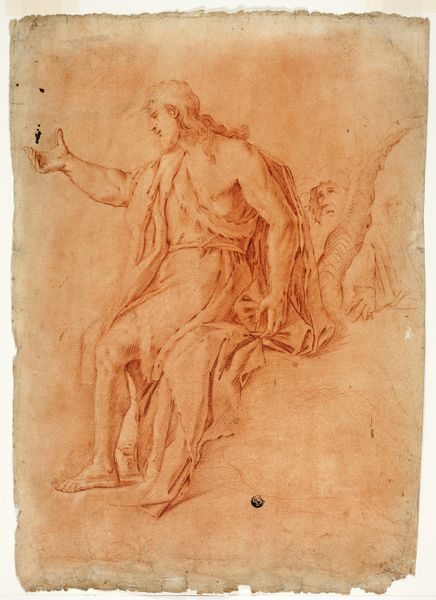
drawing, brown-ink, paper, ink, pen
#
portrait
#
drawing
#
brown-ink
#
figuration
#
paper
#
ink
#
pen
Dimensions: 5 3/4 x 3 7/8 in. (14.61 x 9.84 cm) (sheet)6 3/8 x 4 7/16 in. (16.19 x 11.27 cm) (mount)
Copyright: Public Domain
Curator: Before us is "Standing Draped Figure," a drawing rendered in brown ink on paper. It dates back to the 16th century and the artist is Carlo Urbino. Editor: It has such an ethereal quality. Almost dreamlike, yet powerful in its depiction of the human form through such spare means. There's an evocative use of line and shading. Curator: Exactly. Consider the paper itself – likely handmade, from fibers cultivated, processed, and laid out by artisans. The brown ink would have been compounded from a precise recipe utilizing local minerals or vegetal sources. Urbino then manipulates those materials to achieve this study. What kind of labor went into all of this? Editor: Well, thinking about labor, too: whose body is represented, and to what end? How does Urbino’s gaze shape this representation, particularly within the context of sixteenth-century ideals of the female form? Was she a noble woman? The drawing itself presents such a sense of both the ideal and the human. I find myself wondering about this person depicted, removed through both time and perhaps class. Curator: A very valid reading. And you’re prompting an interrogation of hierarchies, too. In many workshops, drawings such as these served as a mode to prototype forms that would then materialize into more durable and costly mediums. Bronze sculpture, for instance. Drawings were often working-class preparation for wealthy-class artistic commissions. Editor: This brings up so many questions about artistic labor, patronage, and the complicated dance between the artist and their societal role. It also underlines the intersection between art, economics, and class structures of the time period. Curator: It invites a continued reflection on these crucial contexts and their intersection within artistic production. Editor: Indeed. Viewing it this way, "Standing Draped Figure" serves not just as an aesthetic artifact, but as a lens through which to examine broader narratives.
Comments
No comments
Be the first to comment and join the conversation on the ultimate creative platform.
